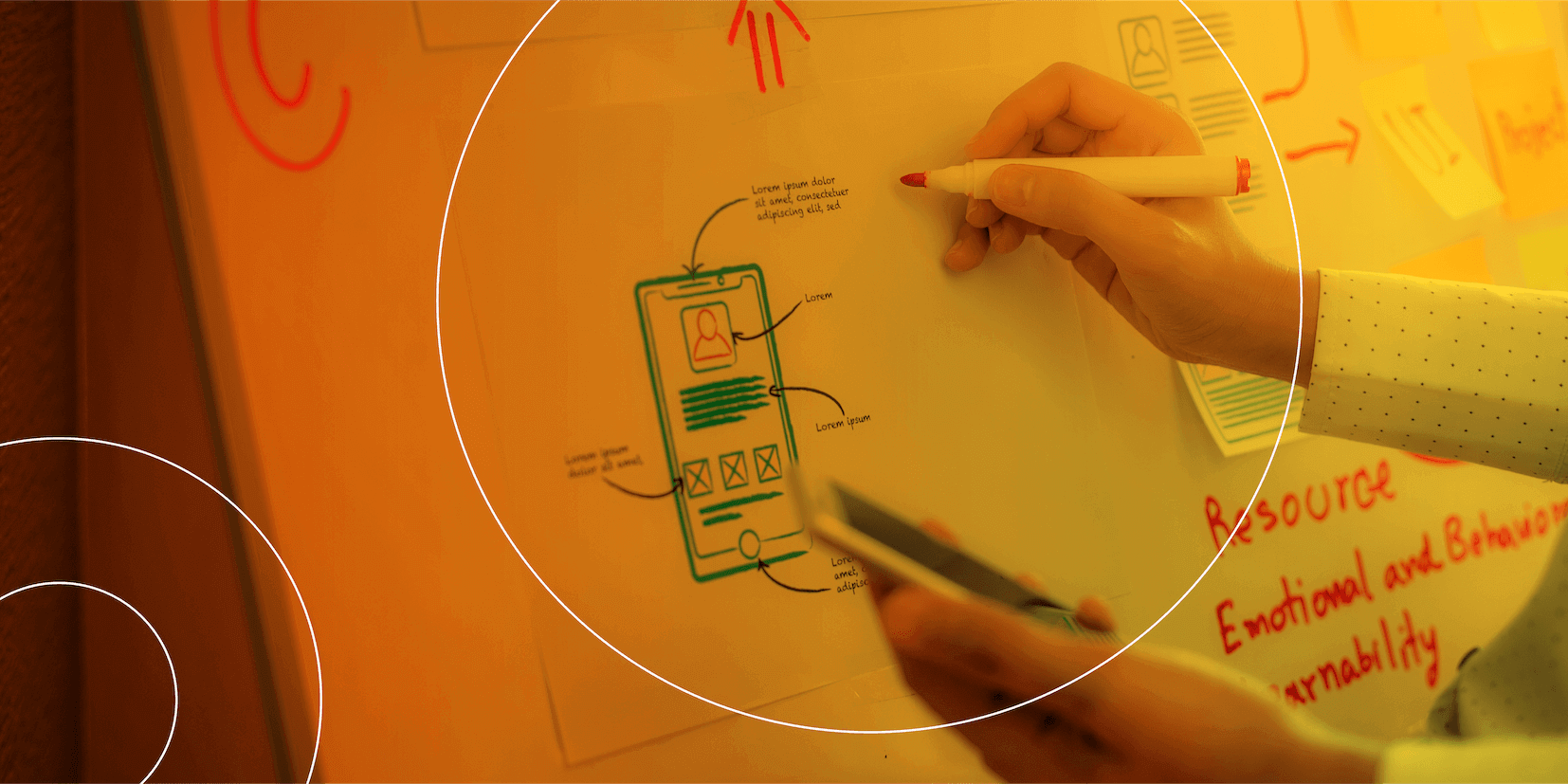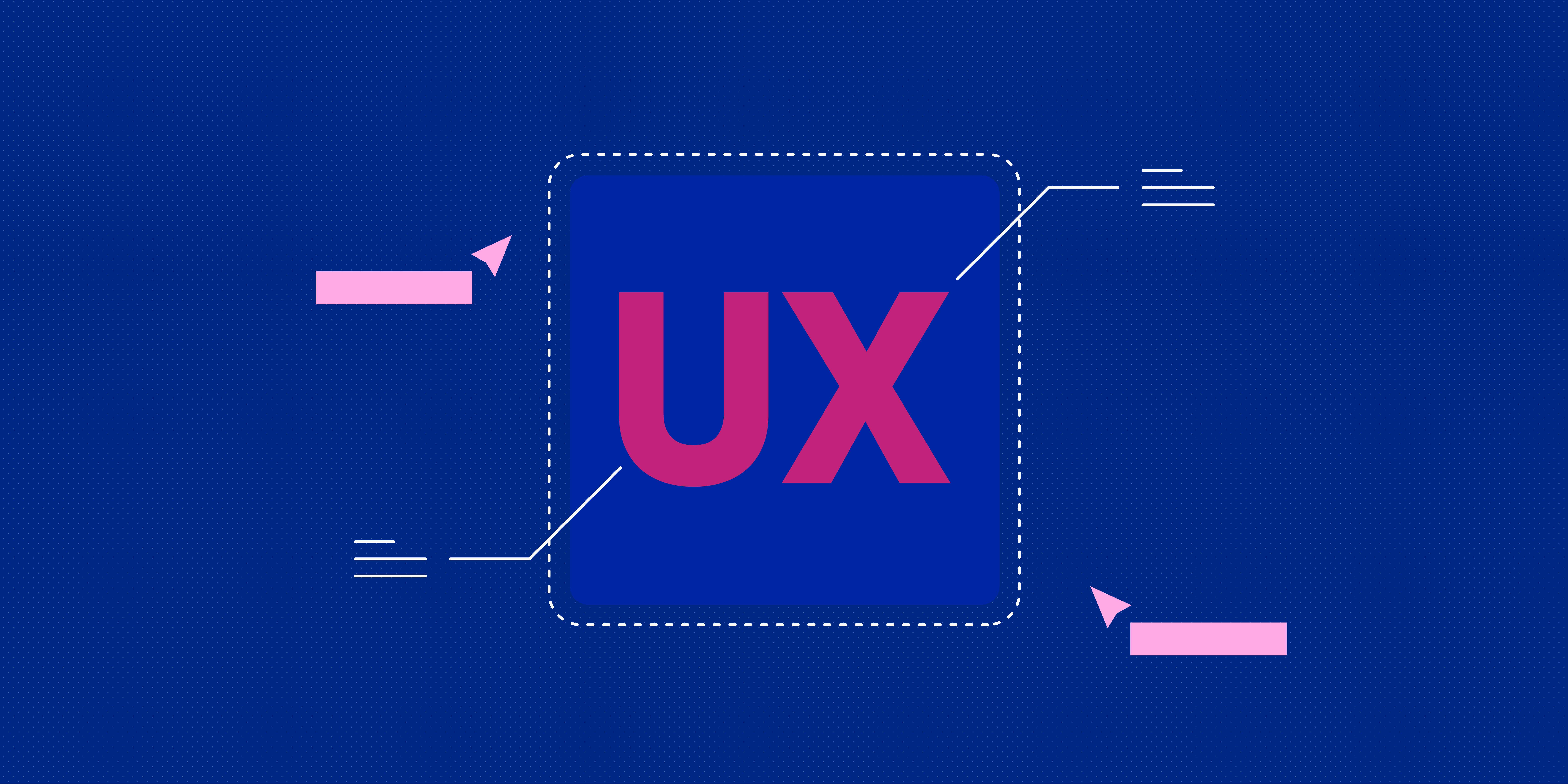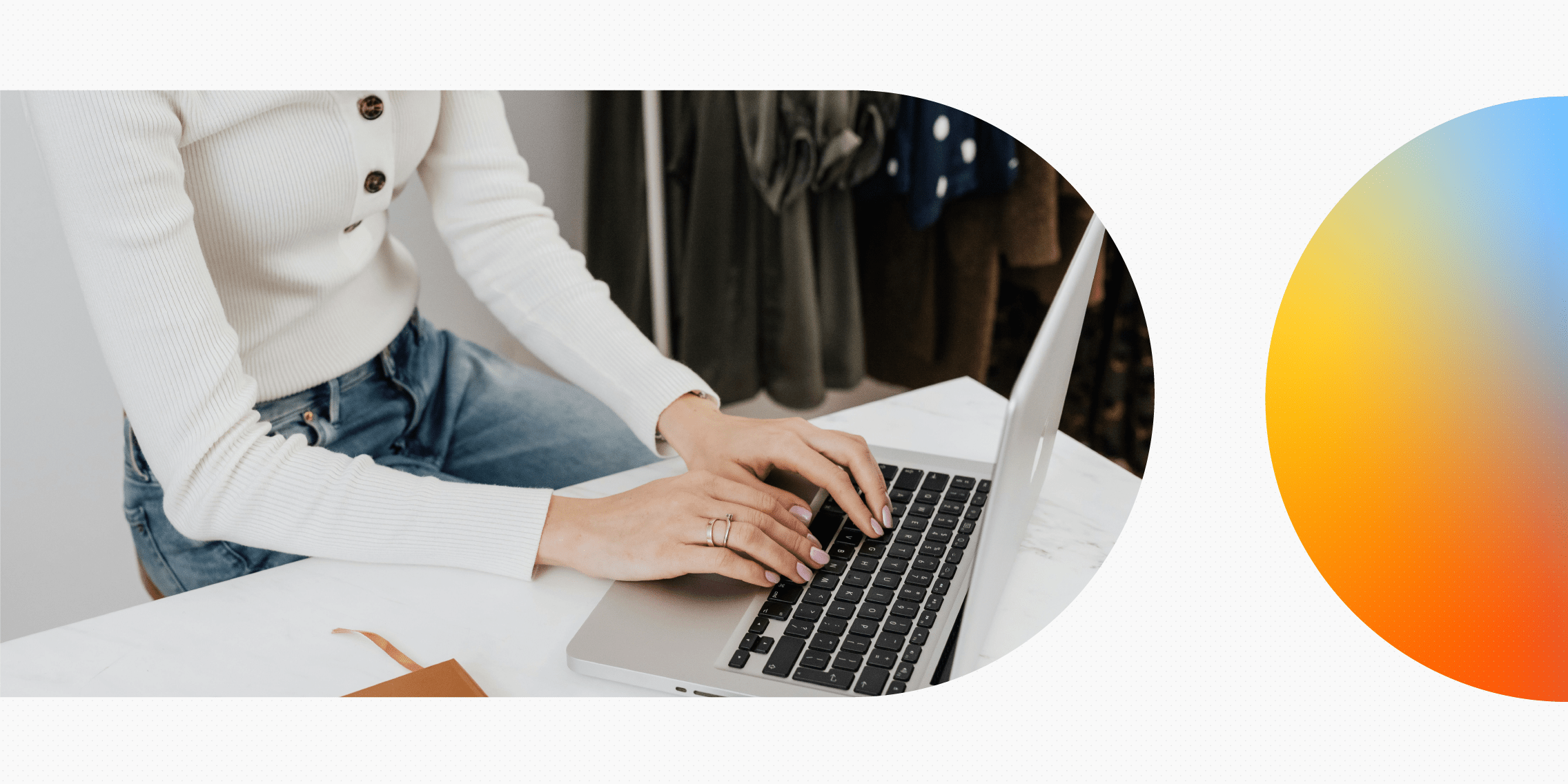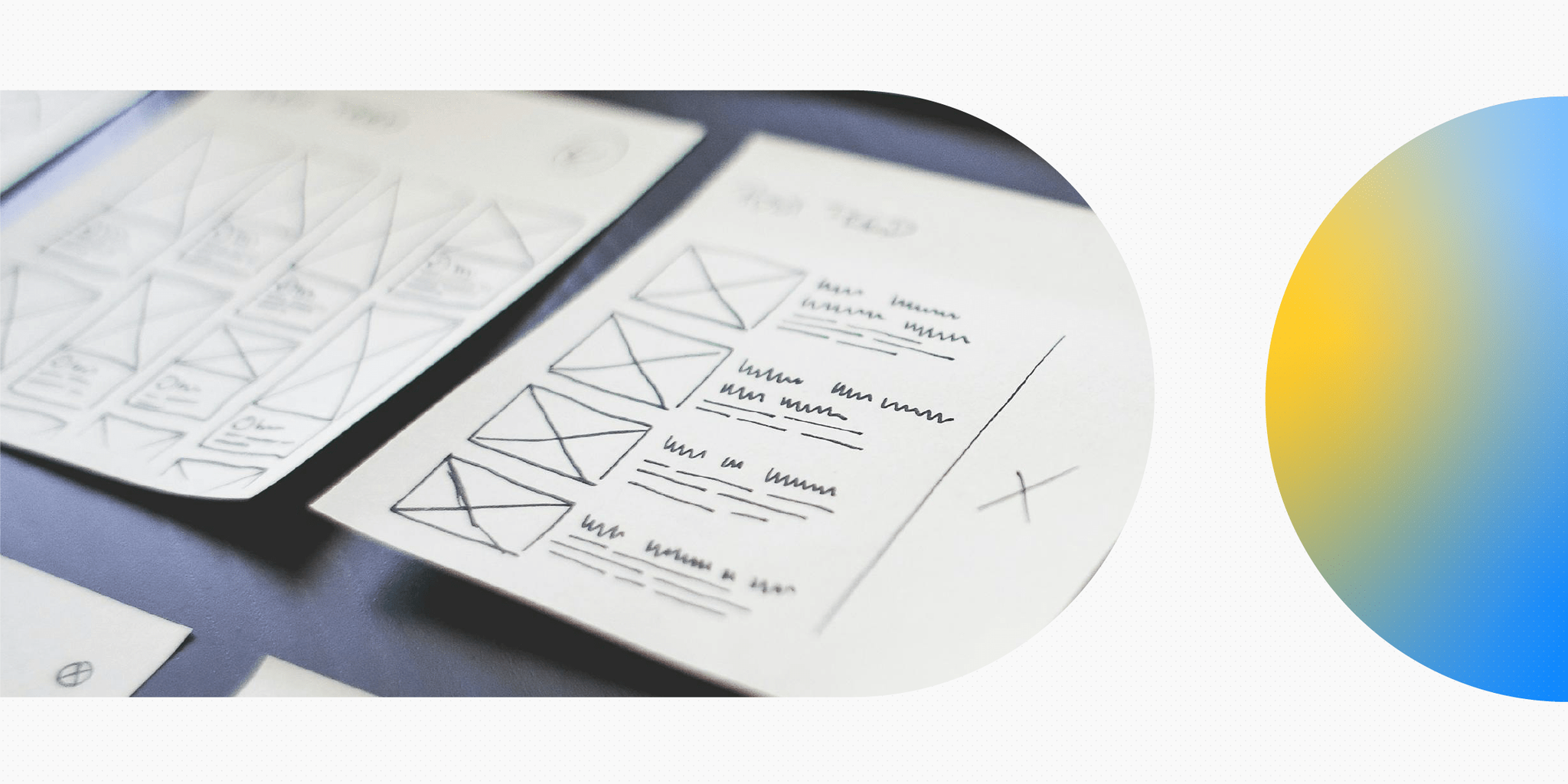For beginners, UX design is both an exciting and potentially daunting topic. With so much to learn, where do you begin? How do you go about tackling all the different concepts, tools and terminology?
We’ve got you covered. This UX design for beginners guide will show you where to focus your learning and how to slowly but surely gain mastery of this fascinating field. We’ve included:
- A beginner-friendly definition of UX design
- UX design for beginners: What you should learn first
- How to start learning UX design as a beginner
We also link to tons of useful resources throughout, so you’ve got everything you need to get started.
What is UX design? A beginner-friendly definition
If you’re a UX beginner, the first thing you should do is to make sure you have a clear understanding of exactly what UX design is.
So what does UX actually stand for? It stands for “user experience” and it relates to the overall quality of a user’s end-to-end experience with a product, service or brand. User experience (UX) design is the process of creating these experiences, ensuring that they are as user-friendly as possible.
UX design is all about solving problems in a user-centric way. The UX process starts with user research and problem definition. That is, getting to know your target audience and pin-pointing the problem they need you to solve.
From there, the focus moves to coming up with potential solutions and sketching out initial ideas for how the product (i.e. the solution) might look in terms of the user journey and the overall structure.
As the idea evolves, the UX designer will create wireframes and prototypes (i.e. a blueprint of how the product will be structured) and test it on sample users before getting it developed into a live product.
That’s just a brief introduction to what UX design is. In your quest to learn UX design, you’ll dive deeper into the topic and zoom in on the specifics for a more thorough understanding of the field. Let’s do that now.
UX design for beginners: Learn these things first
There’s lots to learn when it comes to UX, so it’s important to start from the beginning and work your way up. Which begs the question: as a UX beginner, what should you learn first?
We suggest starting with the fundamental concepts, terminology and principles before moving on to learn and apply practical UX design skills.
Here’s our recommended approach:
1. Start with the fundamental concepts, terminology and principles
If you’re a complete UX beginner, we recommend starting broad. Learn exactly what UX design is and the steps that a typical UX design process follows and get familiar with key UX terminology and principles.
All you really need at this stage is Google! You can use these questions to guide your research and learning:
- What is UX design? What is the value of UX design and why is it so important? What is the difference between UX and UI design?
- How do UX designers contribute to the product design and development process? You’ll find a good overview in this guide detailing how UX and UI designers work together
- What are the fundamental principles of UX design? What do terms like usability, hierarchy, accessibility, user-centricity and information architecture mean?
- What is user research? What are some common user research methods used by UX designers? How do UX designers analyse and use their research insights?
- What deliverables do UX designers produce? Learn about UX/user personas, affinity maps (or affinity diagrams), empathy maps, user flows, wireframes and prototypes
- What tools do UX designers use? Learn about the most popular UX design tools, including user research tools, wireframing tools, prototyping tools, UX documentation tools and UI design tools
- What other roles and job titles are there in UX, besides UX designer? Start here: 11 popular UX roles and job titles explained
- What skills do UX designers need? Focus on both hard and soft skills, as they’re equally important
You can also read through our glossary of 101 UX terms all designers should know and use that as a springboard for further research.
2. Learn and practice essential UX skills
With a good grasp on UX concepts and fundamentals, the next step is to get practical with your learning. UX is a very hands-on profession, after all, so it’s essential that you’re able to carry out the UX process from start to finish.
This includes:
- Planning, conducting and analysing user research
- Defining user problems and ideating solutions
- Being able to use industry-standard tools
- Defining navigation, user flows and information architecture for user-friendly products
- Creating wireframes and prototypes
- Planning, conducting and analysing user and usability tests
You can experiment with some aspects of the UX process independently. For example, you could define a hypothetical user problem and conduct user interviews with friends and relatives and create wireframes and prototypes with free tools (or free trials).
However, if you really want to become a professional UX designer, it’s best to master these practical skills with the structure and guidance from a UX design course. We’ll share some course recommendations in the next section.
How to start learning UX design: Tips for beginners
We’ve outlined a two-pronged approach for learning UX, starting with essential theory before moving on to practical skills. Now let’s share some tips for actually setting the wheels in motion.
Take some “UX design for beginners” courses
When you’re just starting out, make the most of free and not-so-expensive or time-consuming courses geared towards beginners. Consider:
- UX Design Fundamentals, a 6-week online course offered by The UX Design Institute
- UX Design for Beginners: The Essentials of UX and Usability, a short online course available on Udemy
- Introduction to User Experience Design, an on-demand course of approximately 7 hours, available on Coursera
YouTube is also a great resource for free tutorials and explainers, although you won’t necessarily get the same structure as you would with a dedicated course.
Get a professional diploma in UX design
With the fundamentals under your belt, you might decide to take it up a notch with a more weighty course. This is definitely worth considering if you’re learning UX in order to get a job as a UX designer.
With a professional UX diploma, you’ll benefit from expert instruction, a ready-made and thorough curriculum and a certificate to prove your skills once you’ve finished.
The UX Design Institute offers a university credit-rated Professional Diploma in UX Design, teaching everything from user research and analysis to interactions, design patterns and mobile UX, right through to prototyping and handover — essentially everything you need to learn the full UX process from scratch.
Grow your UX network and learn from others
Beyond your chosen UX course, UX beginners can learn a lot from others in the field. Take steps to grow your UX network and connect with those already in the industry — be it through LinkedIn, networking at your current job or by attending meetups. You’ll find a list of some great UX communities here.
It’s also worth connecting with fellow UX beginners, such as other students on your UX course. You can share your journey, participate in knowledge exchange and generally take comfort in knowing that you’re not alone in learning UX from scratch.
And, finally, learn and take inspiration from influencers in the field. You don’t need to connect with them personally to benefit from their knowledge and expertise; that’s the joy of social media. Here are our top 15 UX influencers we think everybody should be following — check them out and add them to your network.
Practice and apply your new skills at every opportunity
The real learning begins when you actually practice and apply your skills to UX projects.
If you’re taking a UX course, the curriculum should include project work. As you gain confidence, seek out additional opportunities to do UX. You can volunteer your skills for free (we show you how and where to find UX volunteering opportunities here), come up with your own user problems and apply the UX process to them or redesign existing products to improve the user experience (known as an unsolicited redesign).
The more you practice, the more confident you’ll become and the sharper your UX skills will be. If you can, try to get feedback on your work from an expert, too; that will accelerate your learning and help you move quickly from UX beginner to professional.
Build (and continuously work on) your UX portfolio
Your UX portfolio isn’t only crucial for showing employers what you’re capable of. The process of building your portfolio also presents a valuable learning opportunity.
You’ll apply what you’re learning about UX to your portfolio website itself and you’ll practice the art of writing up project case studies in a logical, coherent and user-friendly way — a skill you can eventually transfer to the task of sharing your design process with stakeholders when you’re working as a UX designer.
We’ve got plenty of guides to help you with your first UX portfolio. Start with this practical step-by-step guide on how to create your first UX portfolio from scratch, then perfect your portfolio with these 8 UX portfolio tips and best practices. And, if you’re struggling with what to include in your portfolio, we’ve got 5 tried-and-tested ways to find UX projects.
The takeaway
UX is a vast, varied topic and there’s lots to learn — in terms of both theory and practical skills. Our advice on UX design for beginners? Start with a broad, bird’s-eye overview of the field before drilling down into more specific topics and concepts.
From there, practice and hone those key practical skills like user research, wireframing and prototyping. Practice as much as you can, learn from others in the industry and don’t be afraid to experiment.
UX designers never stop learning, and everybody has to start from somewhere. Jump in and enjoy it.




